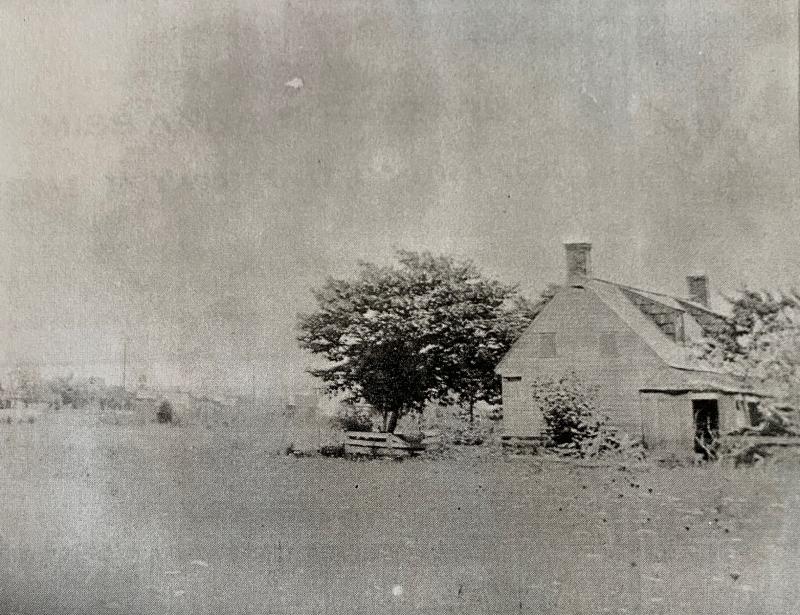Lorenzo Dow Martin farmhouse replica added to Rehoboth diorama
In January 1873, Lorenzo Dow Martin sold his farm, then not much more than sand dunes, to the Methodist Episcopal Camp Meeting Association. The triangular farm was surveyed out to establish the avenues, streets and lots that define Rehoboth’s modern-day commercial core.
Martin’s farmhouse is the oldest and most historic structure surviving in downtown Rehoboth Beach today. The building, with the old Wall’s Apartments sign attached to its west side, is located on Christian Street just south of the yellow Jack Lingo Realtor office at the Rehoboth Avenue intersection. The farmhouse rests on logs (with bark) that extend the width of the structure. The surviving original floorboards are of varying sizes, some as wide as 18 inches. Wooden pegs hold the 200-year-old structure together. The farmhouse was first noted in an 1826 property description.
In the spring of 1873, Columbia Avenue, Surf Avenue (oceanfront) and Rehoboth Avenue were scraped and leveled, and the new town’s several hundred lots were staked out. On May 1, 1873, the Rev. Robert Todd, leader of the religious group that purchased the farm, orchestrated a lot selection event on Martin’s Lawn, just in front of the farmhouse. The event drew hundreds of folks from the major cities in the region, including Washington, D.C., and New York. For the full story of Lorenzo Dow Martin and his farmhouse, go to goldenageofrehoboth.com and watch Video No. 10.
Local historian Paul Lovett is working with Rehoboth Beach Commissioner Edward Chrzanowski and the Rehoboth Beach Historical Society to help preserve the historic farmhouse. The objective would be to establish a foundation to gather the necessary funds to purchase the property from its current owners, the Lingo family; to restore the farmhouse to its original character; and to operate and maintain the property as a satellite location of the Rehoboth Beach Museum. The Lingos are receptive to the idea. Contact Paul Lovett (paul@pdlovett.com or 302-893-9391) or Ed Chrzanowski for details on how to help make it happen.
The n-scale model of the Lorenzo Dow Martin property, recently added to Lovett’s miniature village diorama of 1910 Railroad Era Rehoboth, includes the farmhouse, stable, corncrib, pigsty and farm animals. The scene is sponsored by Marybeth Snyder and Michael J. Daley, who have a home on Henlopen Avenue.
The diorama is a multi-year project to replicate Rehoboth Avenue during its railroad era, which lasted 85 years. The miniature village is on display in the Rehoboth Beach Main Street building between Grove Park and the Rehoboth Beach Museum. To learn about the project, go to goldenageofrehoboth.com. By appointment, Lovett hosts free, informal gatherings at the diorama so visitors can schedule a time, bring their coffee and hear the stories. Contact Paul Lovett at paul@pdlovett.com or call 302-893-9391 to confirm a time.
























































